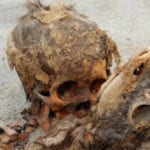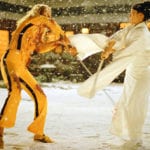 Mysteries
Mysteries  Mysteries
Mysteries  History
History 10 Surprising Stories About the Texas Rangers
 Humans
Humans 10 Philosophers Who Were Driven Mad by Their Own Theories
 Miscellaneous
Miscellaneous 10 Video-Game-Worthy Weapons and Armors from History
 Weird Stuff
Weird Stuff 10 Psychics Who Accurately Predicted Wartime Events
 The Arts
The Arts 10 Pieces of Art Inspired by a Broken Heart
 Health
Health 10 Science Fiction-Sounding New Medical Treatments
 History
History 10 Surprising Facts About the Father of Submarine Warfare
 Space
Space Ten Astonishing New Insights into Alien Worlds
 Weird Stuff
Weird Stuff 10 Bizarre Summer Solstice Rituals Still Practiced Today
 Mysteries
Mysteries Top 10 Haunting Facts About the Ghost Ship MV Alta
 History
History 10 Surprising Stories About the Texas Rangers
 Humans
Humans 10 Philosophers Who Were Driven Mad by Their Own Theories
Who's Behind Listverse?

Jamie Frater
Head Editor
Jamie founded Listverse due to an insatiable desire to share fascinating, obscure, and bizarre facts. He has been a guest speaker on numerous national radio and television stations and is a five time published author.
More About Us Miscellaneous
Miscellaneous 10 Video-Game-Worthy Weapons and Armors from History
 Weird Stuff
Weird Stuff 10 Psychics Who Accurately Predicted Wartime Events
 The Arts
The Arts 10 Pieces of Art Inspired by a Broken Heart
 Health
Health 10 Science Fiction-Sounding New Medical Treatments
 History
History 10 Surprising Facts About the Father of Submarine Warfare
 Space
Space Ten Astonishing New Insights into Alien Worlds
 Weird Stuff
Weird Stuff 10 Bizarre Summer Solstice Rituals Still Practiced Today
Top 10 Grisly Tales From The American Frontier
The American frontier was a brutal environment. A land with few to no laws meant situations were often handled in dark and unusual ways. Violence was often a first resort.
At other times, it was the natural world that posed the biggest threat to human survival. Nature on the frontier was vast and unforgivable. Here are 10 of the grisliest tales from the American frontier.
Horrific Facts About Scalping On The American Frontier
10 John Colter And The ‘Human Hunt’
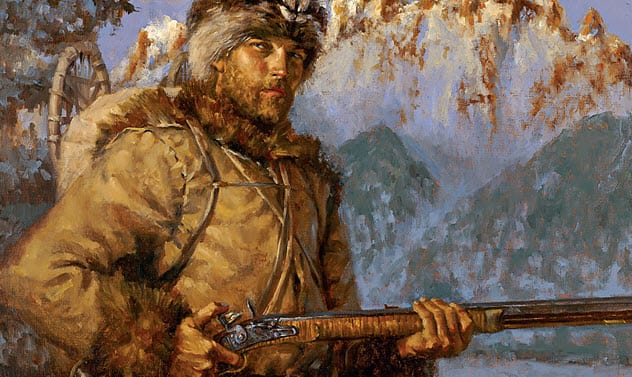
John Colter, a legend of the American frontier, spent most of his life in the wilderness. In 1803, he joined the Lewis and Clark Expedition where he gained renown as one of the best hunters and scouts.
After the expedition, Colter worked for the Missouri Fur Company and was sent on scouting missions to warn Native American tribes that the company was heading toward them and wanted to trade.
He is largely thought to be the first white man to see Jackson Hole and Yellowstone Lake. People later dubbed Yellowstone and nearby regions as “Colter’s Hell” in reference to his descriptions of the bubbling water and other geothermal activity for which the area is known. Sources vary as to the geographical definition of “Colter’s Hell.”
In 1809, Colter was captured by Blackfoot warriors. They stripped him naked and took everything from him before saying that he was free to leave. Colter could not believe his luck until he realized that he had just become part of a grisly game of “human hunting” for sport.
The warriors chased him. Although he eluded most of them, he did have to face one, killing the man with his own spear before stealing his blanket and hiding in a river to avoid the others.
Over the next 11 days, Colter made the arduous 320-kilometer (200 mi) journey back to civilization. He ate bark and roots and had only the blanket for warmth. Having survived this ordeal, he decided to return to civilization and live a quieter life.[1]
9 The Shooting Of David Lunt

One evening in January 1877, David Lunt was in a saloon in the frontier town of Deadwood, South Dakota, when an enraged drunken man entered. As the marshal of the town attempted to calm him, the drunk accidentally fired his revolver into Lunt’s head.
For most people, a shot to the head would be the end. But not for David Lunt. He calmly got up, left the bar, and went home as onlookers gawked at the bullet hole in his head.
Lunt continued daily life and seemed to have no pain. However, after two months, he began to complain of worsening headaches. A short time later, Lunt died. The autopsy revealed that the bullet had caused a terminal abscess to form in his brain.[2]
8 The Tragedy Of The Donner Party
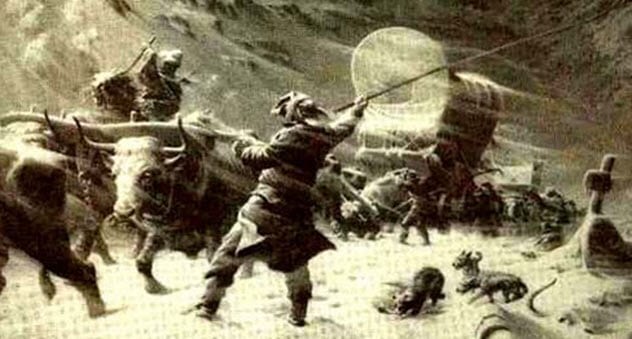
The story of the Donner Party is a horrifying tale of suffering, starvation, and cannibalism. In 1846, a group of 89 people, led by Jacob and George Donner, left Springfield, Illinois, to start a new life in California. During the initial part of the journey, members of the Paiute tribe stole or killed many of the party’s cattle. But this was only the start of their troubles.
Attempts to find shortcuts cost the group valuable time. By October, they still had not made it across the Sierra Nevada mountain range to the relative safety of California. After heavy snowfall blocked the pass across the mountains, the Donner Party was forced to set up camp at Truckee Lake and wait out the bitter winter.
As the winter dragged on and the supplies of food dwindled, starvation and malnutrition set in. Those who wished to survive were forced to resort to cannibalism by eating their dead companions.[3]
A group of fewer than 20 men, women, and children (known as the “Forlorn Hope”) fashioned makeshift snowshoes and set out from the camp to find help. Only a few made it to the other side of the mountains. The remaining members of the group died of hypothermia, exhaustion, or starvation. The bodies of those who had fallen were used to feed the survivors.
It was not until April 1847 that the last survivor at Truckee Lake was rescued. By this time, fewer than 50 of the original group were still alive.
7 Hugh Glass
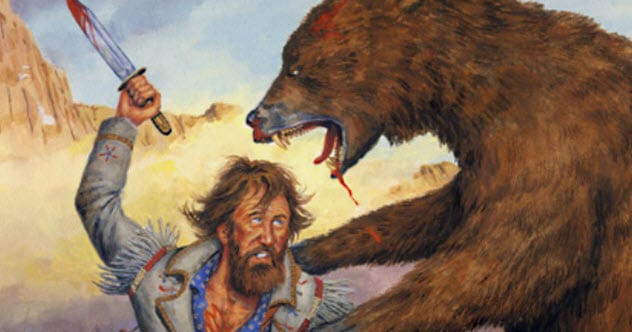
In 1823, trapper Hugh Glass was attacked by a bear in South Dakota while on an expedition. Although he was able to kill the bear, Glass was left badly wounded by the attack. He had suffered a broken leg, a ripped scalp, a punctured throat, and numerous gashes.
His expedition partners, John Fitzgerald and Jim Bridger, believed that Glass would not survive his injuries. After several days, they decided to put him in a shallow grave, take his weapons, and leave him for dead.
Glass, however, had other plans. After regaining some strength, he began the journey back to civilization. This approximately 320-kilometer (200 mi) trip would have been difficult at the best of times. But for someone as badly injured as Glass, it was a formidable ordeal.
On many occasions, his agonizing pain forced him to crawl for miles. But eventually, he arrived at his destination. After he recovered, he set out to take revenge on Fitzgerald and Bridger. However, upon tracking them down, he decided to forgive them.[4]
Does this tale sound oddly familiar? It was the inspiration behind the 2015 film The Revenant, which starred Leonardo DiCaprio.
6 The Wilbarger Scalping
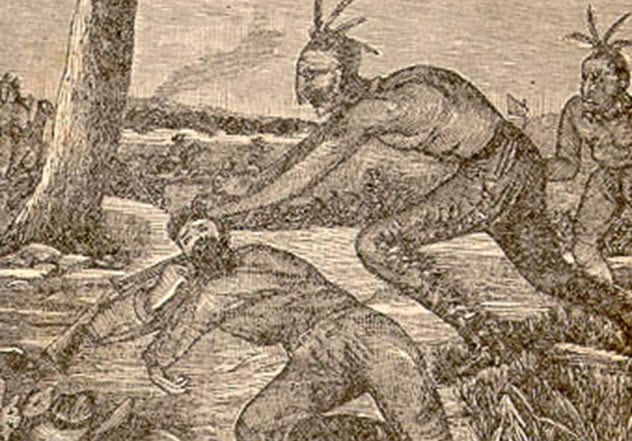
In 1827, Josiah P. Wilbarger built a farm on the Colorado River. One day, he and his party were out scouting when some members of the Comanche tribe attacked Wilbarger’s group. Two of Wilbarger’s men were killed immediately while another two escaped.
Wilbarger himself was hit by two arrows, one in each leg, and was also struck by a bullet on his neck. Knowing that playing dead was his only chance of survival, Wilbarger lay still as the enemy approached. Then, without warning, one of the tribesmen grabbed Wilbarger’s head and scalped him. How he did not scream in pain is a wonder.
After the tribesmen left, Wilbarger lay in agony while visions of his sister, Margaret, assured him that help would come. Indeed, those who had escaped the attack did return to the farm, and a party set out to help Wilbarger. Ultimately, he survived the ordeal.
For 11 years, he went about his day-to-day business with a special cap on his head to cover the area where his scalp had once been. Unfortunately, he accidentally knocked his head against a beam one day. This resulted in an infection which claimed his life.[5]
10 Pioneer Children Abducted By Native Americans Who Refused To Go Home
5 The Great Flood Of 1862
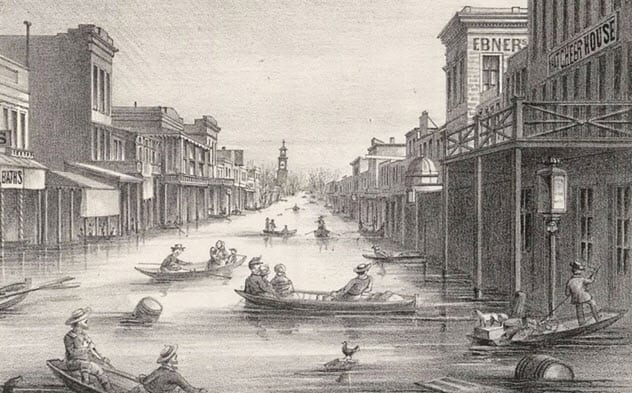
As one of the worst natural disasters in American history, the Great Flood of 1862 ruined thousands of people’s lives. The flood—which was caused by an unprecedented amount of rain and snow—lasted for over 40 days. As of this writing, it still holds the record in California, Oregon, and Nevada for the largest flood in each state’s history.
The deluge swelled rivers to the breaking point, with water spilling across the land and ruining everything in its way. Entire towns were obliterated, leaving thousands displaced and fighting for survival.
Although the number of deaths was relatively low, the economic implications of the flood were enormous, with livestock killed and infrastructure destroyed. It took more than 10 years for the stricken areas to recover. Thousands of people never overcame the impoverishment caused by the flood.[6]
4 John Heath And The Bisbee Massacre
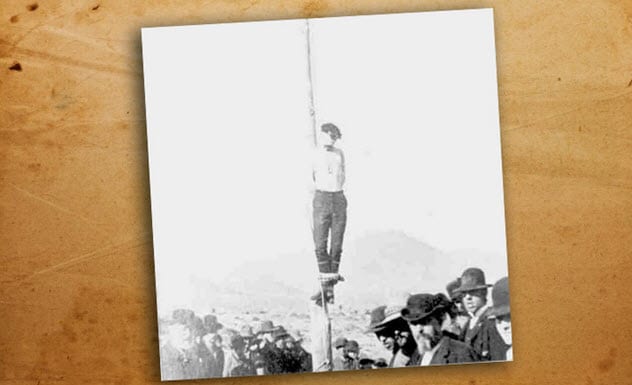
In 1883, five armed men entered the town of Bisbee, Arizona, to rob the local bank. The robbers believed that the bank was holding the payroll for hundreds of miners working for the Copper Queen Mining Company.
However, the thieves had timed the robbery poorly—the payroll had not been deposited into the bank yet. Taking what they could, the bandits exited the bank and were immediately embroiled in a gunfight on the streets of Bisbee. When the battle was over, three townsmen and a pregnant woman were dead.
The gang quickly mounted their horses and rode out of town. John Heath organized a posse from the town to track down and apprehend the bandits. The posse failed in their mission.
However, thanks to the work of detectives, all five bandits were eventually found and arrested. Upon their capture, they implicated a sixth man—none other than John Heath. Working as an inside man, he had allegedly been the mastermind behind the entire bank heist.[7]
All five robbers were sentenced to death. The condemned men died in what is still Arizona’s largest mass hanging. John Heath, who was tried separately, was only sentenced to life in prison because all five bandits chose to deny his involvement during the trial.
However, the townsfolk were not satisfied with this outcome and decided to take the matter into their own hands. An angry mob stormed the jail, took Heath outside, and lynched him from a telegraph pole.
3 Margaret Handley Erskine
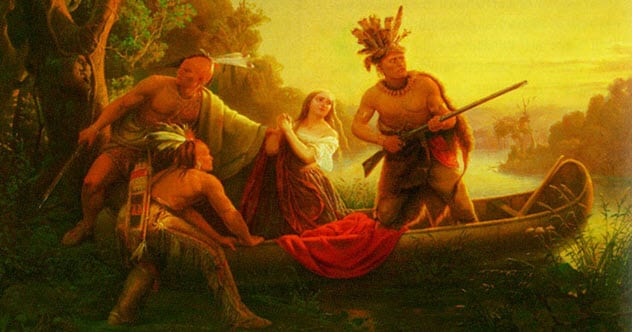
In 1779, a young woman named Margaret Paulee (who was later known as Margaret Handley Erskine) was traveling with her husband and her baby from Virginia to Kentucky. They wanted to establish a new life on the frontier.
During the journey, they were attacked by members of the Shawnee tribe. Margaret’s husband was shot and killed. The tribe members also beat Margaret before brutally killing her baby in front of her.
Margaret was then taken captive by the Shawnees. Over the next five years, she lived with them, giving birth to another child while captive and surviving an attempt on her life by one of the tribesmen.
She finally escaped from the wilderness when frontiersmen found her and purchased her freedom. They took her back to Virginia. There, she eventually remarried and lived a long life.[8]
2 Buffalo Bill’s First Scalp For Custer

In 1876, Lieutenant Colonel George Custer and his men lost the Battle of the Little Bighorn against warriors of the Lakota Sioux, Northern Cheyenne, and Arapaho tribes. Afterward, William Frederick Cody (aka “Buffalo Bill“) decided to avenge Custer.
Cody traveled to Warbonnet Creek, where he attacked Native Americans in a bloodthirsty frenzy. Infamously, he managed to kill one warrior, who was known as “Yellow Hair.” After removing the man’s scalp, Cody exclaimed, “The first scalp for Custer!”
At the time, Cody’s act of revenge was well received by American settlers who also wanted payback for Little Bighorn. However, history has helped to highlight his actions as being incredibly barbaric and unwarranted. Indeed, he claimed later in life that he regretted what he had done.[9]
1 The Cholera Epidemic Of 1873
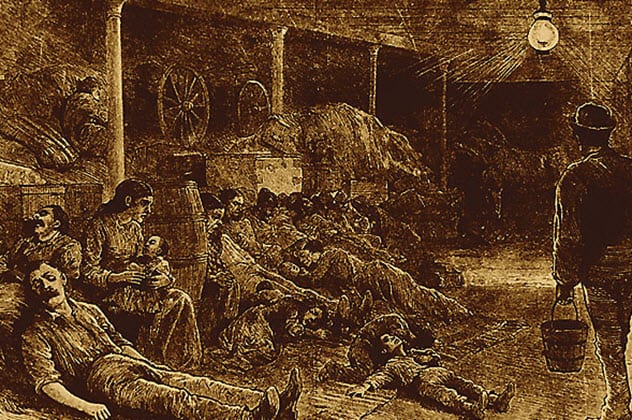
In 1873, a cholera epidemic swept through America. It was hardest on frontier towns as they had fewer resources to treat patients and less sanitary living conditions.
At the time, it was believed by some that the epidemic had been started by migrants who had first arrived in New York and then moved west. In Yankton in the Dakota Territory, Dr. J.B. Van Velson described migrants to his frontier town as “filthy persons.”
He said they could not be compelled to adopt sanitary precautions. According to Velson, they preferred not to use toilets, instead urinating and defecating just outside of the buildings where they were located.
The people who contracted cholera often died quickly. The disease was known to wipe out 50–60 percent of the population of a wagon train or small settlement. Quite often, towns were forced to quarantine themselves to limit the spread of the disease.[10]
It is estimated that thousands of settlers who headed west died of disease each year during the 18th and 19th centuries.
10 Unsolved Mysteries From The Wild West
About The Author: My name is Aidan, and I’m from the UK. It is safe to say I’m a bit of a history nerd. I have a BA in History and American Studies and an MA in Global History. I enjoy most history. But I have a particular interest in darker tales and subject matter and focus mostly on modern history.

